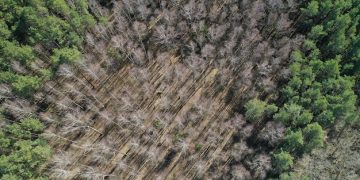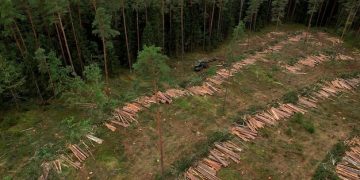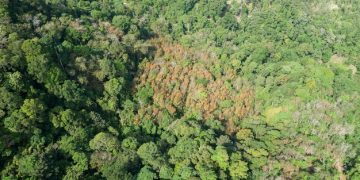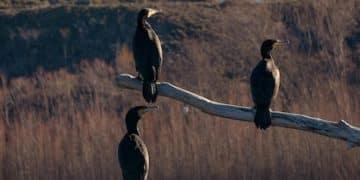Key Differences: State vs Federal Wildlife Conservation Laws in the US

The key differences between state and federal wildlife conservation laws in the US lie in their scope, enforcement powers, and specific areas of focus, with federal laws setting minimum standards and addressing interstate and international issues, while state laws manage wildlife within their borders.
Wildlife conservation in the United States is a complex interplay of federal and state laws, each playing a crucial role in protecting the nation’s diverse ecosystems and species. Understanding the different jurisdictions and how they function is essential for anyone interested in environmental policy, conservation efforts, or even simply appreciating the natural world. Let’s explore what are the key differences between state and federal wildlife conservation laws in the US, uncovering the nuances of each level of governance.
The Federal Framework for Wildlife Conservation
The federal government’s role in wildlife conservation is primarily to set minimum standards and address issues that span across state lines or have international implications. This includes protecting endangered species, managing migratory birds, and regulating international trade in wildlife.
Key Federal Laws
Several key pieces of legislation form the backbone of federal wildlife conservation efforts.
- Endangered Species Act (ESA): Provides for the conservation of species that are endangered or threatened throughout all or a significant portion of their range, and the conservation of the ecosystems on which they depend.
- Migratory Bird Treaty Act (MBTA): Protects migratory birds, their nests, and eggs from take (pursue, hunt, shoot, wound, kill, trap, capture, or collect).
- Lacey Act: Combats trafficking in “illegal” wildlife, fish, and plants.
These laws grant the federal government significant authority to protect wildlife, often overriding state laws when there is a conflict.
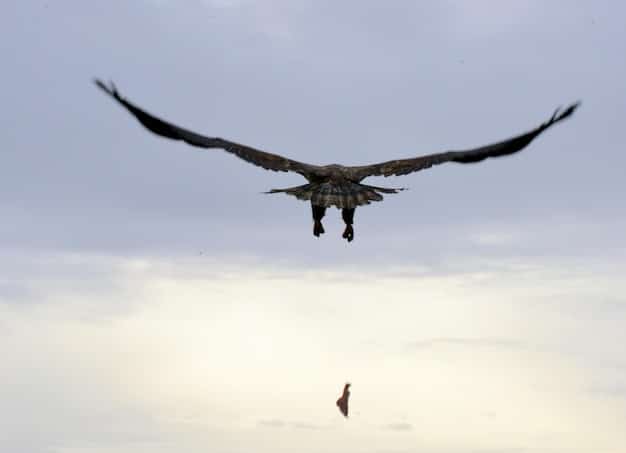
The federal government also plays a crucial role in funding research and conservation programs, often partnering with state agencies and non-profit organizations to achieve common goals.
State Wildlife Conservation Laws: A Closer Look
State governments have primary authority over wildlife management within their borders. This includes setting hunting and fishing regulations, managing wildlife populations, and protecting habitats.
Scope of State Authority
State laws are tailored to the specific needs and circumstances of each state, considering factors such as geography, climate, and the presence of unique or threatened species.
- Hunting and Fishing Regulations: States regulate hunting and fishing seasons, bag limits, and licensing requirements.
- Habitat Protection: States may establish protected areas, such as state parks and wildlife management areas, to conserve habitats.
- Species Management: States manage wildlife populations through various methods, including habitat manipulation, predator control, and reintroduction programs.
State wildlife agencies often work closely with federal agencies, but ultimately, they have the final say on how wildlife is managed within their borders.
This localized approach allows for more flexibility and responsiveness to local concerns, but it can also lead to inconsistencies in wildlife management across different states.
Jurisdictional Overlap and Cooperation Between State and Federal Entities
While state and federal governments have distinct roles, there is significant overlap and cooperation in wildlife conservation. Many conservation initiatives require collaboration between both levels of government.
Collaborative Efforts
Federal and state agencies often work together on projects such as:
- Habitat Restoration: Restoring degraded habitats to benefit wildlife populations.
- Species Recovery: Implementing recovery plans for endangered and threatened species.
- Law Enforcement: Enforcing wildlife laws and regulations.
These collaborative efforts are essential for achieving meaningful conservation outcomes.
For example, the recovery of the bald eagle, a national symbol, was a joint effort involving both federal and state agencies, as well as private landowners and conservation organizations.
Funding Mechanisms for Wildlife Conservation
Funding is a critical component of wildlife conservation efforts. Both state and federal governments rely on various funding mechanisms to support their programs.
Sources of Funding
Common sources of funding include:
- Federal Grants: Funds provided by the federal government to states for specific conservation projects.
- State Hunting and Fishing License Revenues: Revenues generated from the sale of hunting and fishing licenses, which are often dedicated to wildlife management.
- Excise Taxes: Taxes on hunting and fishing equipment, which are distributed to states through the Pittman-Robertson Act and Dingell-Johnson Act.
These funding sources provide essential resources for conservation activities.
However, funding for wildlife conservation is often limited, and agencies must prioritize their resources carefully.
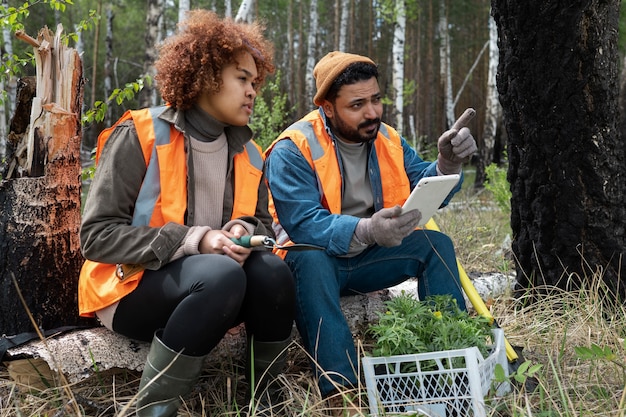
Enforcement of Wildlife Conservation Laws
Effective enforcement is crucial for ensuring that wildlife conservation laws are followed. Both state and federal agencies have law enforcement officers responsible for enforcing these laws.
Enforcement Powers
Enforcement powers vary depending on the jurisdiction and the specific law in question.
- Federal Enforcement: Federal wildlife officers have the authority to investigate and prosecute violations of federal wildlife laws, such as the ESA and the MBTA.
- State Enforcement: State game wardens or conservation officers enforce state wildlife laws, including hunting and fishing regulations.
Both federal and state law enforcement officers play a vital role in protecting wildlife from illegal activities.
Cooperation between federal and state law enforcement agencies is essential for effectively addressing wildlife crime.
Challenges and Future Directions in Wildlife Conservation
Despite significant progress in wildlife conservation, numerous challenges remain. These include habitat loss, climate change, invasive species, and funding constraints.
Addressing the Challenges
To address these challenges, conservation efforts must adapt and evolve.
- Habitat Conservation: Protecting and restoring habitats is essential for providing wildlife with the resources they need to survive.
- Climate Change Adaptation: Developing strategies to help wildlife adapt to the impacts of climate change.
- Invasive Species Management: Controlling and eradicating invasive species that threaten native wildlife.
Collaboration across different levels of government and with private landowners and conservation organizations is crucial for achieving these goals.
Wildlife conservation is an ongoing process that requires continuous monitoring, research, and adaptation to new challenges.
Public Engagement in Wildlife Conservation
Public support and engagement are essential for successful wildlife conservation. Educating the public about the importance of wildlife and involving them in conservation efforts can make a significant difference.
Ways to Get Involved
Members of the public can support wildlife conservation by:
- Volunteering: Volunteering with conservation organizations or government agencies to assist with conservation projects.
- Donating: Donating to organizations that support wildlife conservation.
- Advocating: Advocating for policies that protect wildlife and their habitats.
By getting involved, individuals can contribute to the long-term health and well-being of wildlife populations.
The future of wildlife conservation depends on the collective efforts of government agencies, conservation organizations, and the public.
| Key Aspect | Brief Description |
|---|---|
| 🛡️ Scope of Authority | Federal laws set minimum standards; state laws manage wildlife within their borders. |
| 🐦 Key Federal Laws | ESA, MBTA and Lacey Act protect endangered species and regulate wildlife trade. |
| 🎣 State Regulations | States regulate hunting, fishing, habitat protection tailored to local contexts. |
| 🤝 Cooperation | Federal and state entities often collaborate on habitat restoration and species recovery. |
Frequently Asked Questions
▼
The primary goal of the ESA is to protect and recover imperiled species and the ecosystems upon which they depend. It provides a framework for listing species as endangered or threatened and implementing conservation measures.
▼
State governments primarily fund wildlife conservation through hunting and fishing license revenues. Additional funding comes from federal grants and excise taxes on hunting and fishing equipment.
▼
The MBTA protects migratory birds, their nests, and eggs from various forms of “take,” including hunting, shooting, wounding, and capturing. This act helps to maintain healthy populations of these important species.
▼
Federal and state agencies often collaborate on habitat restoration projects, species recovery plans, and law enforcement efforts. These partnerships are essential for achieving comprehensive conservation outcomes.
▼
Wildlife conservation faces challenges like habitat loss, climate change, invasive species, and limited funding. Addressing these challenges requires adaptive strategies and collaboration among various stakeholders.
Conclusion
Understanding the interplay between state and federal wildlife conservation laws is essential for protecting our nation’s biodiversity. Both levels of government play critical roles, and their cooperation is vital for achieving meaningful conservation outcomes. By continuing to adapt and evolve our approaches, and with the support of an engaged public, we can ensure a healthy future for wildlife in the United States.
